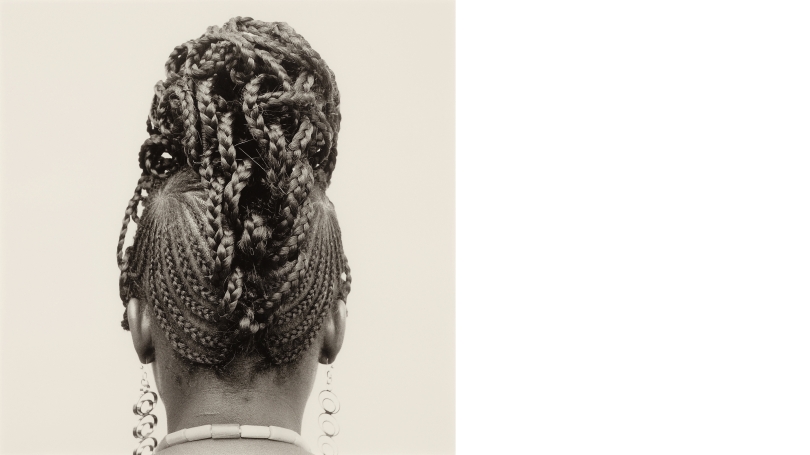ALEXANDRA M. THOMAS, Curatorial Research Associate
Hood Quarterly, summer 2023
The Hood Museum has gone a few years now without an exhibition of African art, but that gap will soon be filled with the opening of Homecoming: Domesticity and Kinship in Global African Art in July. Since 2021, I have been working as a curatorial research associate focusing specifically on the permanent collection of African and African diaspora art at the Hood Museum. Drawing from that collection and featuring a recent acquisition of a quilt by Bhasha Chakrabarti, the exhibition will spotlight historical and contemporary art from and about the African continent and its diaspora, focusing on a theme with which we are all familiar: home. Interpreted broadly as any art and material culture related to domesticity and kinship, this theme has accommodated a vast range of works on view: women's cloth garments, sculptures symbolizing motherhood and fertility, intimate representations of figures within domestic interiors, dolls and dollhouses, household tools, and more. Artists have creatively engaged with the domestic sphere and related themes for centuries. For example, you will find a 19th-century grass broom made by an unidentified Zulu artist. The broom is associated with the labor of the Black South African women who craft and use them for domestic work while also evoking the pan-African religious practice of spiritual cleansing. It is unusual and perhaps provocative to consider a broom a work of art, but Homecoming affirms craftmaking as artmaking and domestic and spiritual work as creative work— undoing patriarchal definitions that seek to separate and hierarchize these categories.
Abebe, by Nigerian photographer J. D. 'Okhai Ojeikere, celebrates the beauty and pride of Black women's hairstyles that are widely popular in Africa and throughout the diaspora. Ojeikere has documented hundreds of these highly stylized coiffures to serve as portraits of Black women's beauty culture. Practitioners of this art form are subjected to meticulous evaluation based on the length, style, and shape of their braids, and it requires years of practice to perfect one's technique.
Works in Homecoming will rotate throughout the year it is on view to meet the conservation needs of the various textiles, paintings, and works on paper. A sneak peek—Mother and Son by Haitian artist Roland Dorcély is slated to appear in the galleries at the end of October. A mother and her child, dressed in stark white clothing, are washing their feet in an image perhaps evocative of Haitian Vodou. In Haiti, Vodou practitioners often wear white, symbolizing purity, at ceremonies. Haitian Vodou is a blend of West African Vodun spirituality and Roman Catholicism, and the act of cleansing one's feet in a basin might allude to the Christian ritual of feet washing. The inclusion of artwork from the Americas cements the transnational and diasporic purview of Homecoming through acknowledging that African art is a global phenomenon.
Depictions of love and kinship, fertility sculptures, gorgeously designed everyday household items, and the ways in which people choose to curate their homes all contribute to what might be called domestic visual culture. These forms of creative labor are often overlooked and deprecated because they are associated with femininity and women's work. In many ways, then, Homecoming speaks to our current historical moment. We have mourned and survived through the height of the COVID-19 pandemic and begun to understand its lasting impact on our lives. Remote work and its gendered division of labor, the loss of certain forms of physical togetherness to social distancing necessities, and, of course, the premature loss of loved ones are all part of a moment in which domesticity, kinship, and intimacy are widespread in the public discourse.
Beyond the pandemic, ongoing political assaults on reproductive justice and LGBTQ communities can be countered by a feminist, anti-racist curatorial vision. In African masks of feminine beauty, fertility figures, mother and child iconography, and other practices of abundant kinship we encounter the infinite force of Black women across the globe as artists and curators. Expanding the notion of the "curator" beyond the museum profession encourages an understanding of Black women as caretakers, keepers, and designers. Homecoming endeavors to generate these dialogues within our Dartmouth and Upper Valley communities through the lens of global African art.
Homecoming: Domesticity and Kinship in Global African Art is organized by the Hood Museum of Art, Dartmouth, and generously supported by the William B. Jaffe and Evelyn A. Hall Fund.



